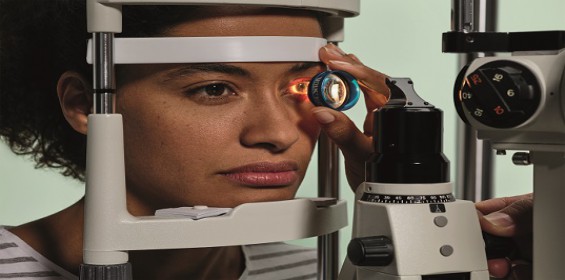A five-step plan to workplace eye health
Published: 24 May, 2019
Looking after employees’ sight can be one of the most cost-effective and beneficial ways an employer is able to support health and wellbeing in the workplace. Jim Lythgow, director of strategic alliances at Specsavers Corporate Eyecare, highlights a five-step plan to explain the simple ways in which workplace eye care can help to look after the health of employees’ eyes.
Workplace eye care is about so much more than just checking employees can see their computer screen. It can have a positive impact on much of their working role, support their overall health and wellbeing, and could even save their sight. We advise employers to ensure they have a comprehensive eye care policy in place to cover all employees. It is a cost-effective benefit that can reap rewards right across the business.
Simple five-step plan:
1. Regular eye tests
Workplace eye care is about far more than just checking employees can see adequately. A regular eye test will assess the health of the eyes, checking for early signs of conditions like glaucoma and cataract. It can also help the optometrist to detect and monitor serious conditions affecting wider health, like diabetes, increased blood pressure and cardiovascular disease.
2. Get protected
Wearing suitable eye protection whenever appropriate is possibly the most important thing anyone can do to safeguard their vision. Research has shown that lack of comfort and fit are likely to result in employees removing safety eyewear when it is not safe to do so. Well-fitting eyewear is, therefore, essential. Prescription safety glasses offer a much better alternative to over-goggles for those who need glasses in their everyday life.
3. Screen care
While it has been proved that screen use does not directly damage the eyes, it can result in dry, itchy, tired eyes, and even headaches and migraines. The health and safetyDisplay Screen Equipment regulations refer to this and requires employers to make provision for all screen users to receive regular company-funded eye care. Employees should be encouraged to take up this benefit, as dealing with issues such as headaches and tired eyes can boost productivity and morale; and identifying issues that may affect wider health are clearly invaluable.
4. Sun worries
Ultraviolet (UV) rays emitted by the sun can cause short and long-term eye damage including cataracts and age-related macular degeneration. Excessive exposure to the sun can cause a painful sunburn-like inflammation of the cornea at the front of the eye. This can greatly increase the risk of developing more serious, even sight-threatening, conditions in the future. Sunglasses may not be the first thought for employers regarding personal protective equipment (PPE), but they are a valid requirement for many employees who work outside or drive during the course of their work. It is important to choose good quality sunglasses. Poor quality sunglasses may cause the pupil to dilate, actually increasing the amount of UV light filtering into the eyes. Check sunglasses comply with BSEN 1836: 1997 or bear the CE kite mark and are marked UV 400.
5. Healthy lifestyle
Smokers are at greater risk of developing vision loss and eye disease. Cataracts and age-related macular degeneration, which is the most common cause of sight loss in the UK, are much more likely to develop in smokers. Heavy alcohol consumption may also increase the risk of early age-related macular degeneration. Encourage employees to look after their general health and wellbeing with regular wellbeing events and targeted communications.







